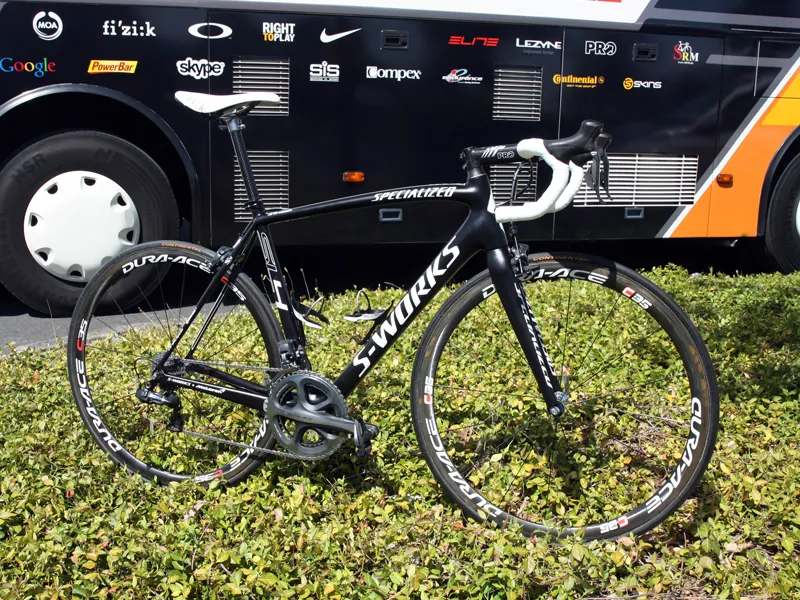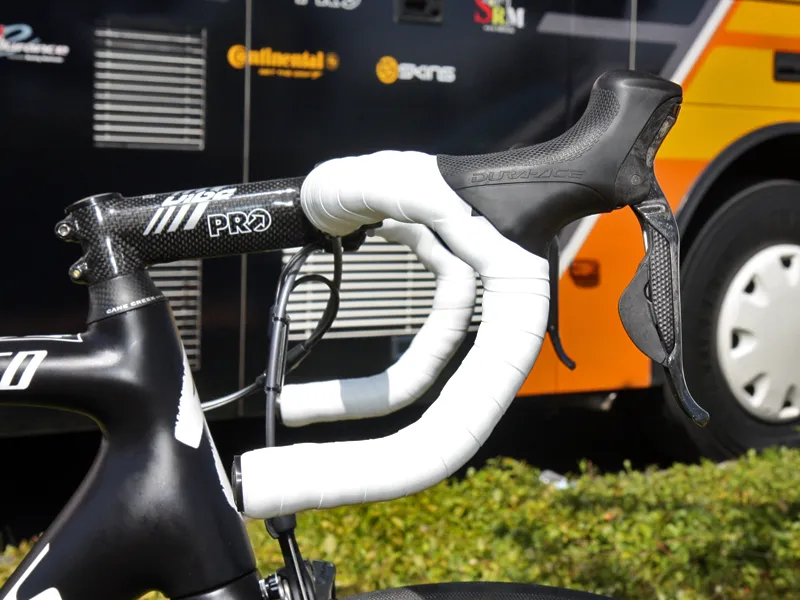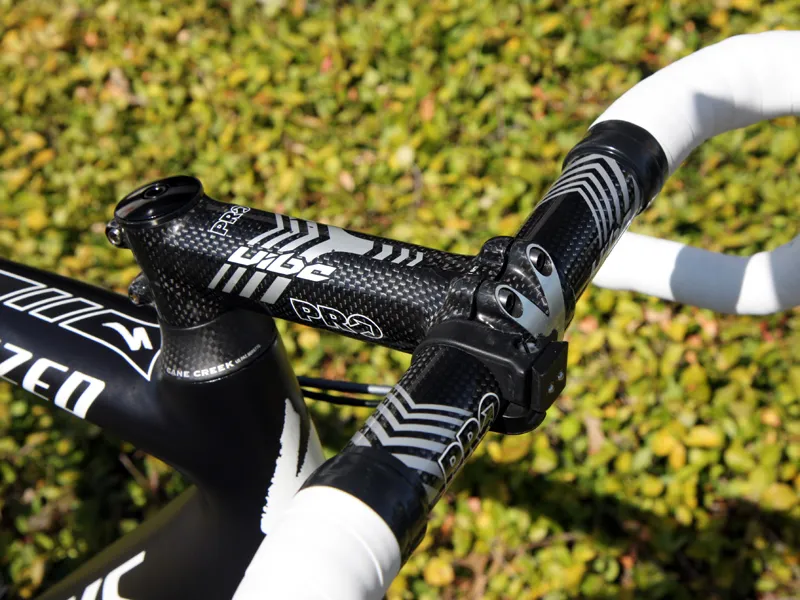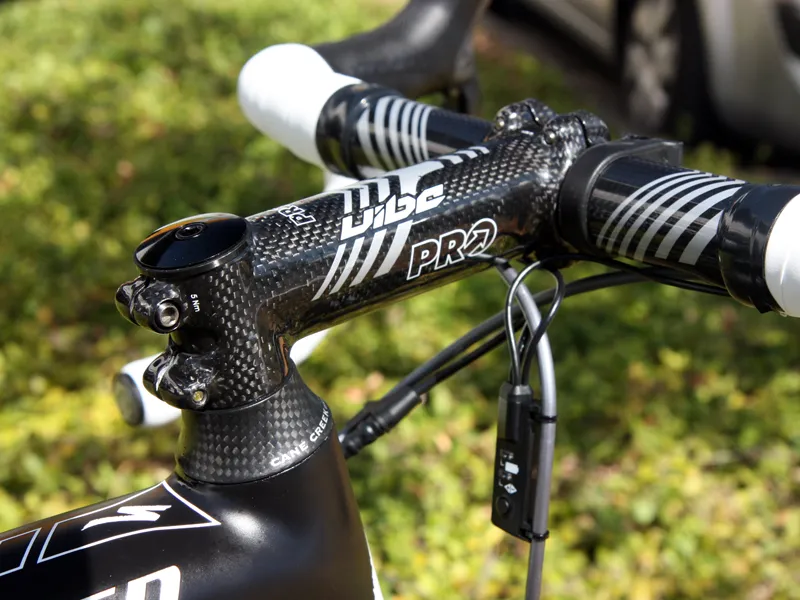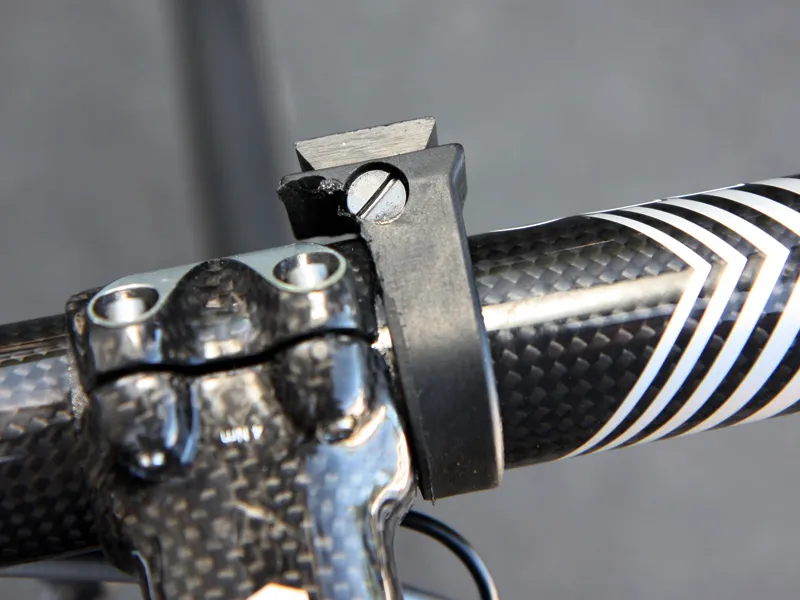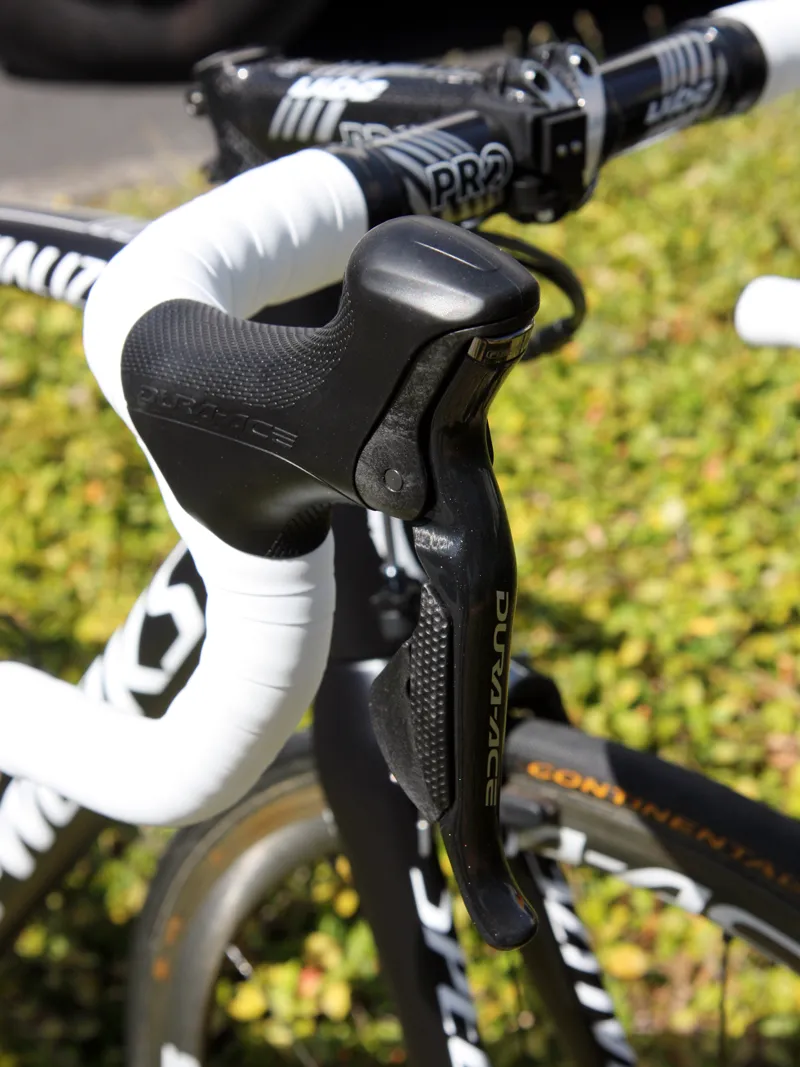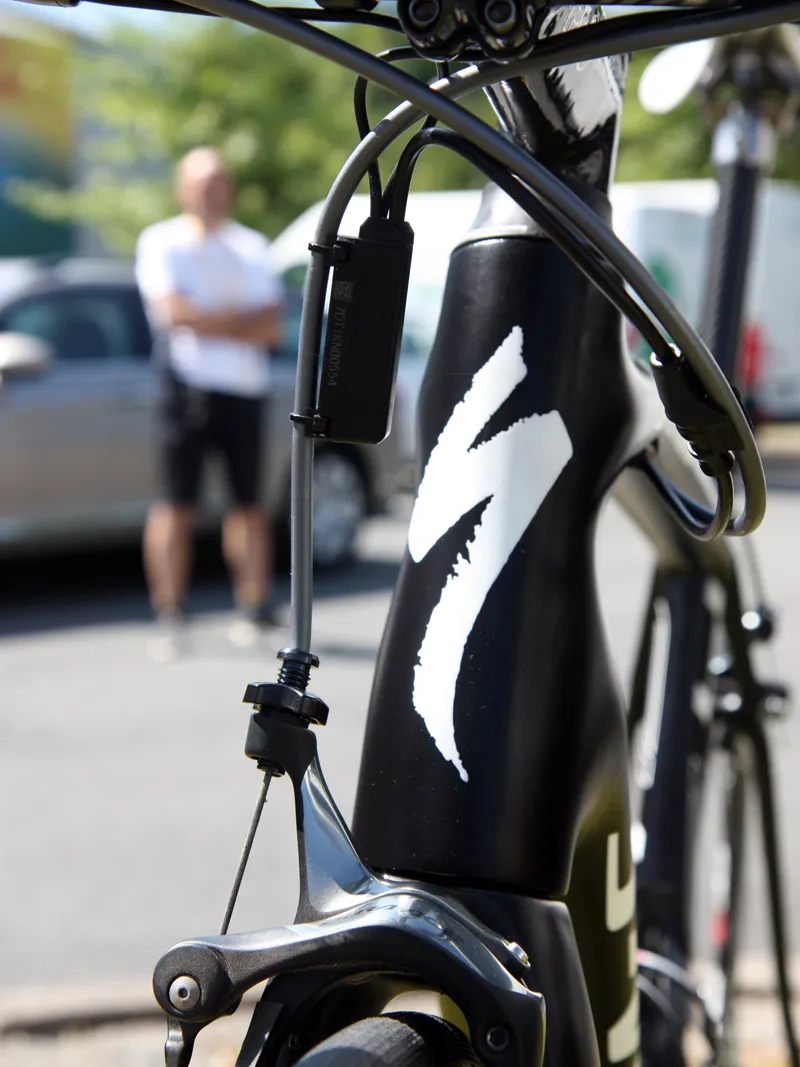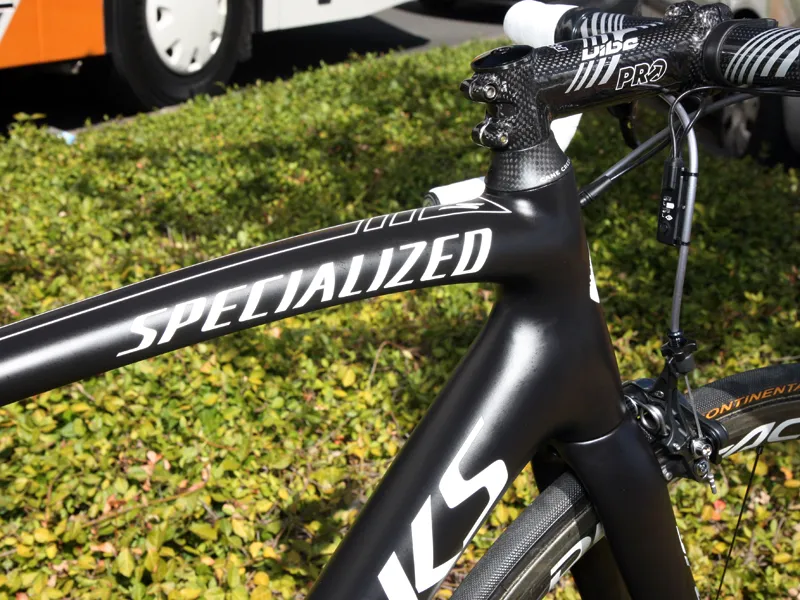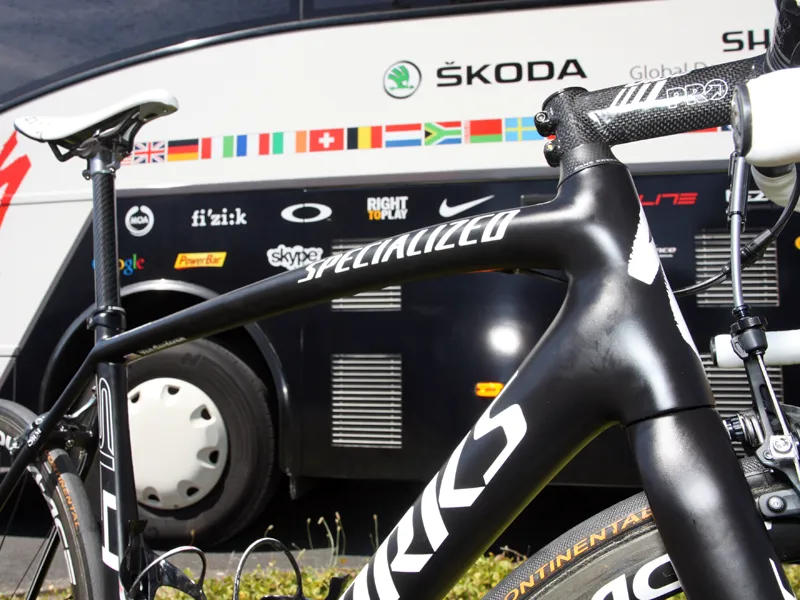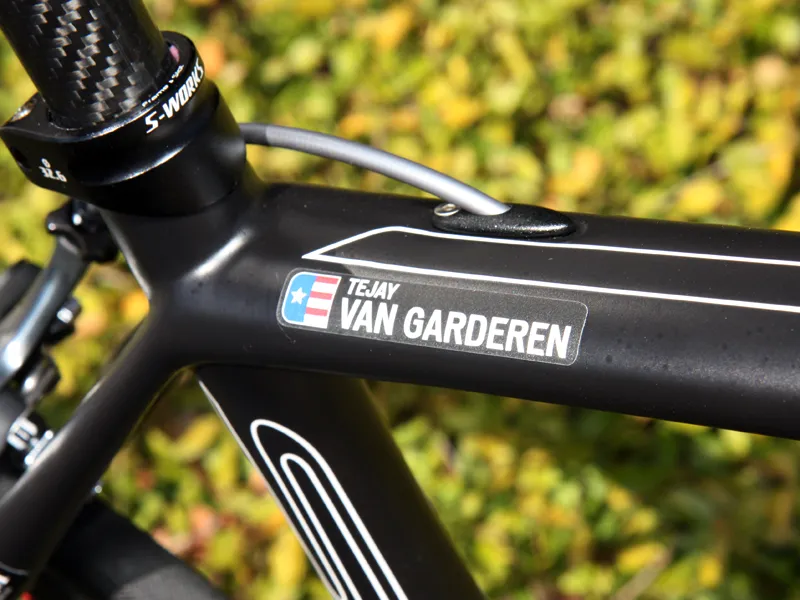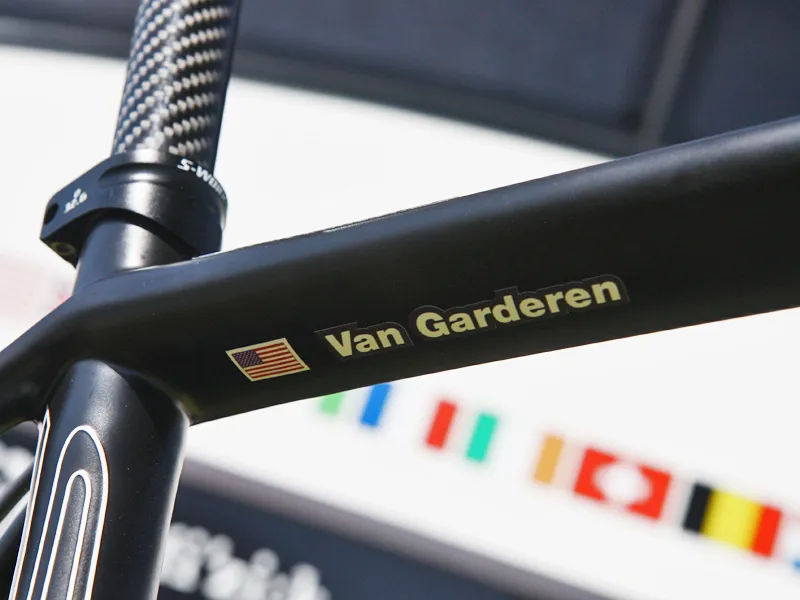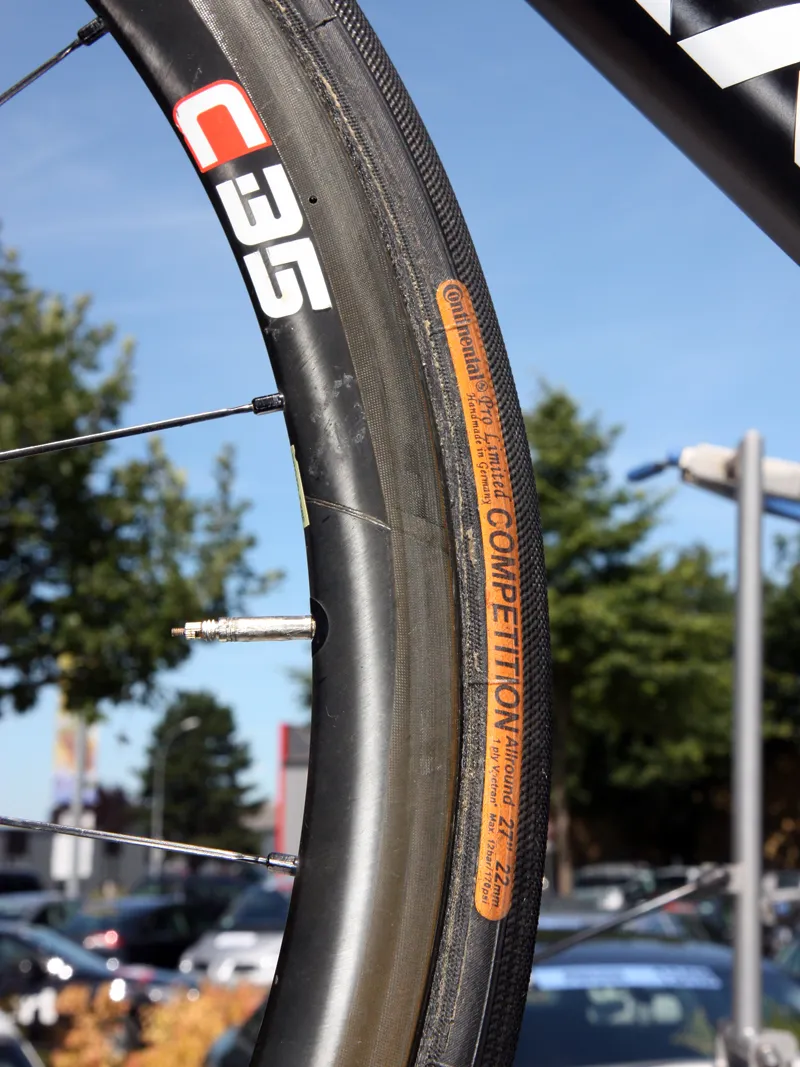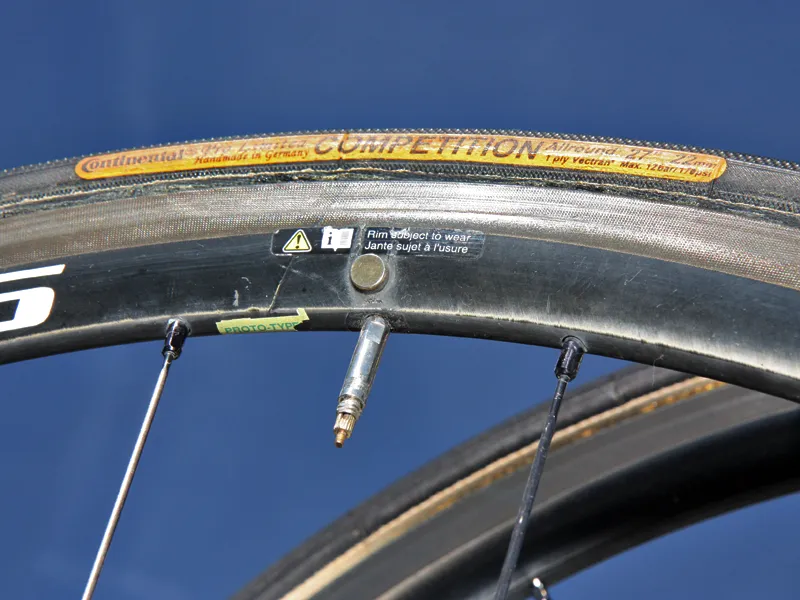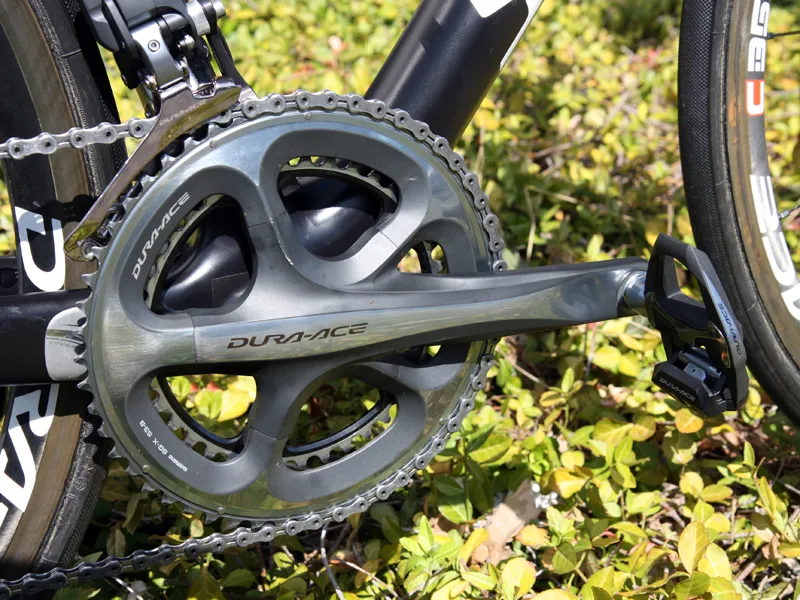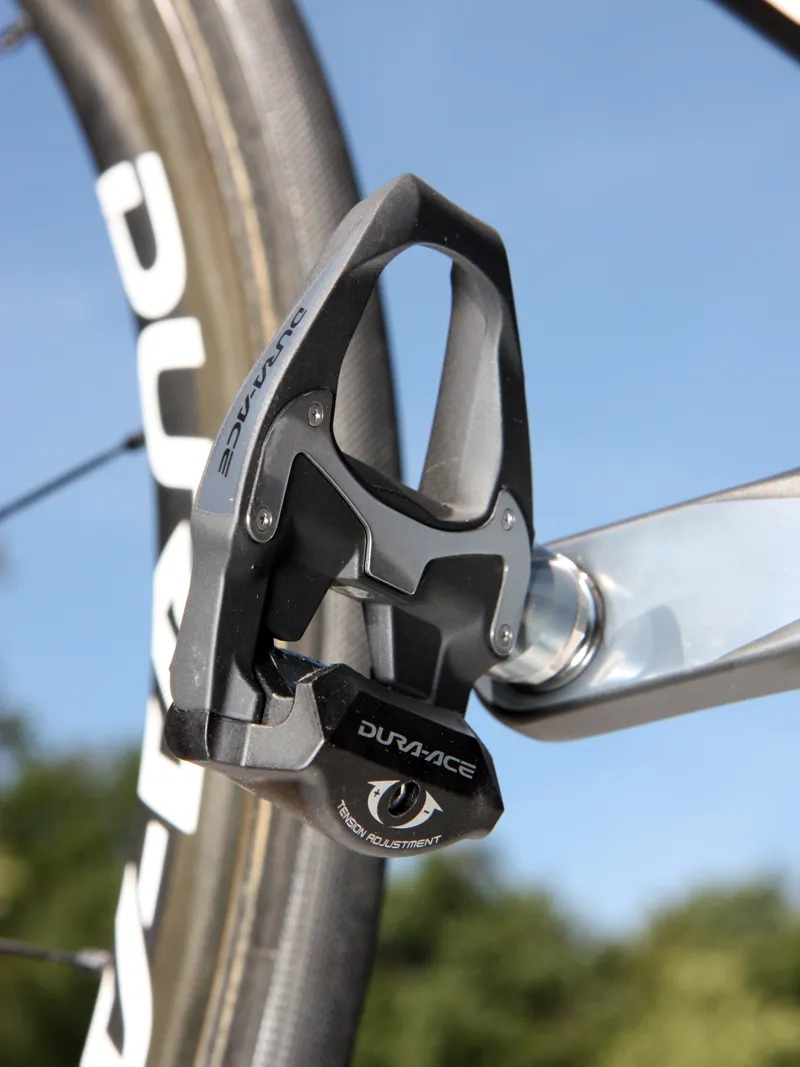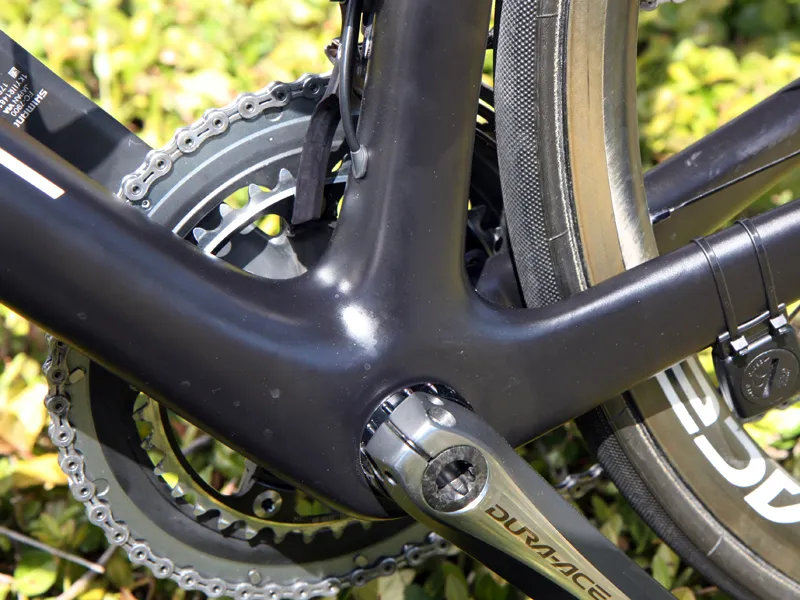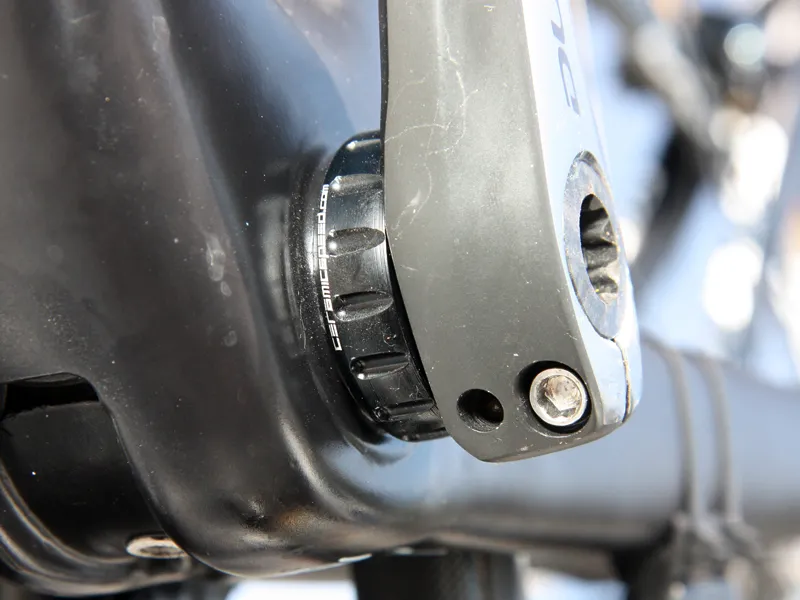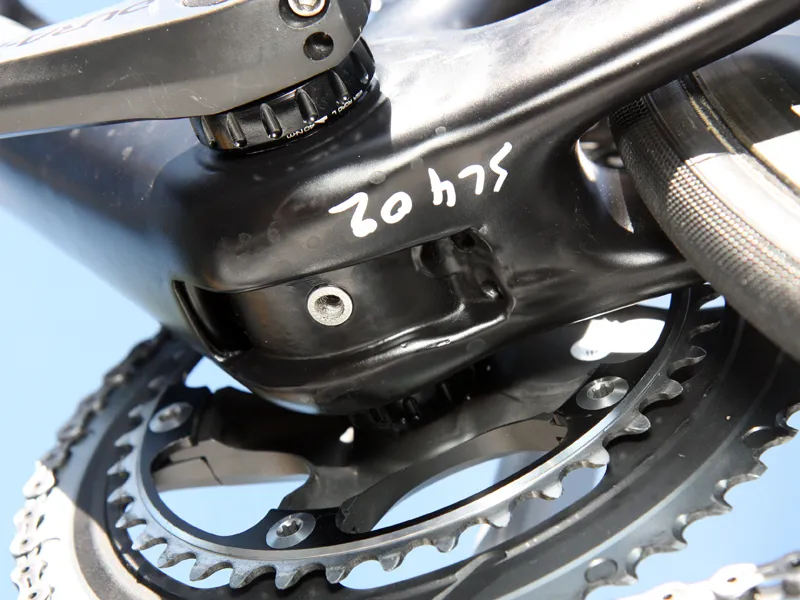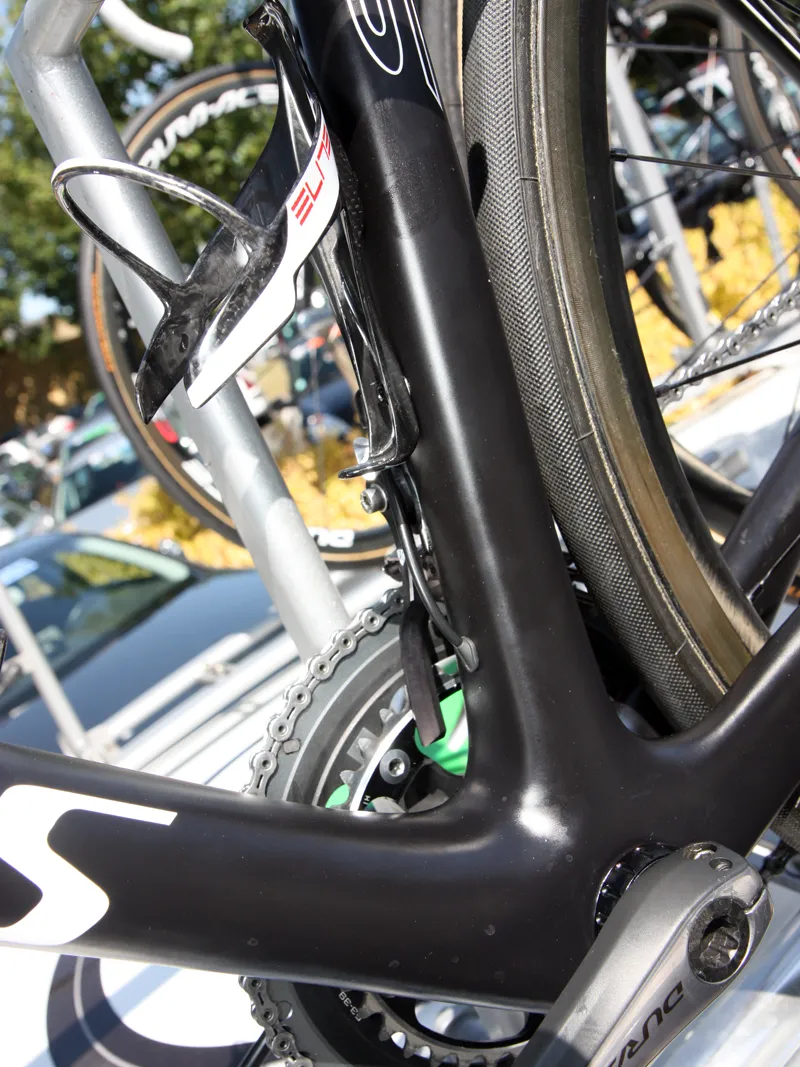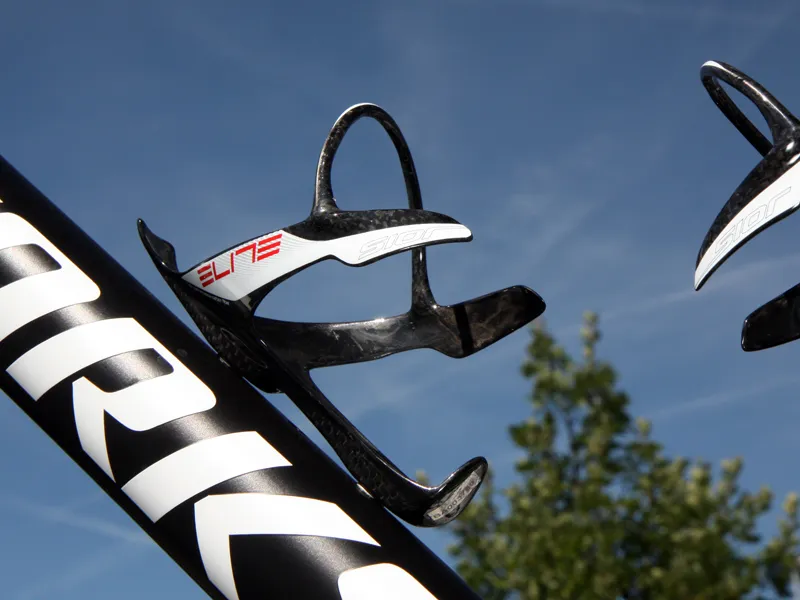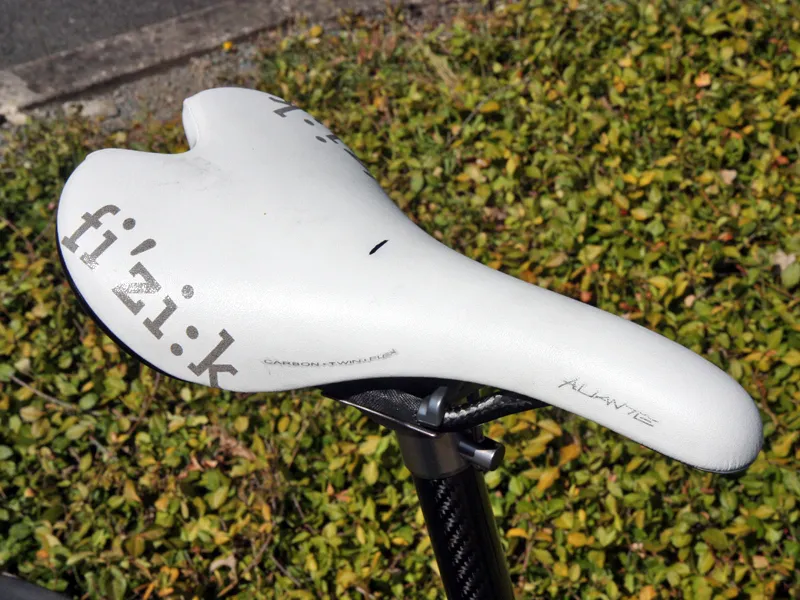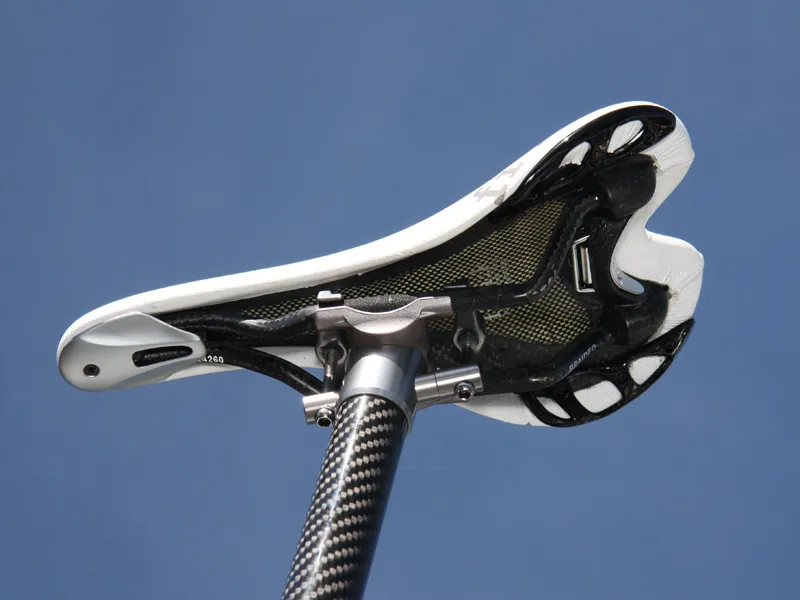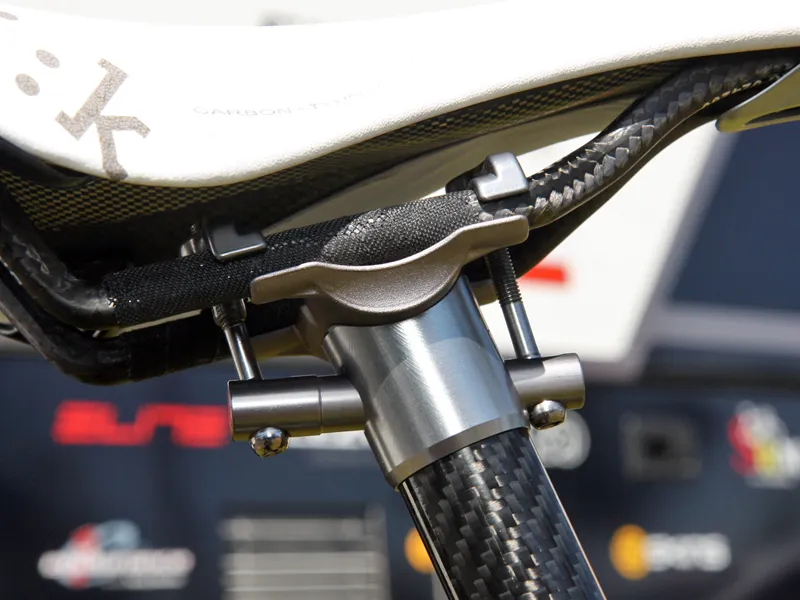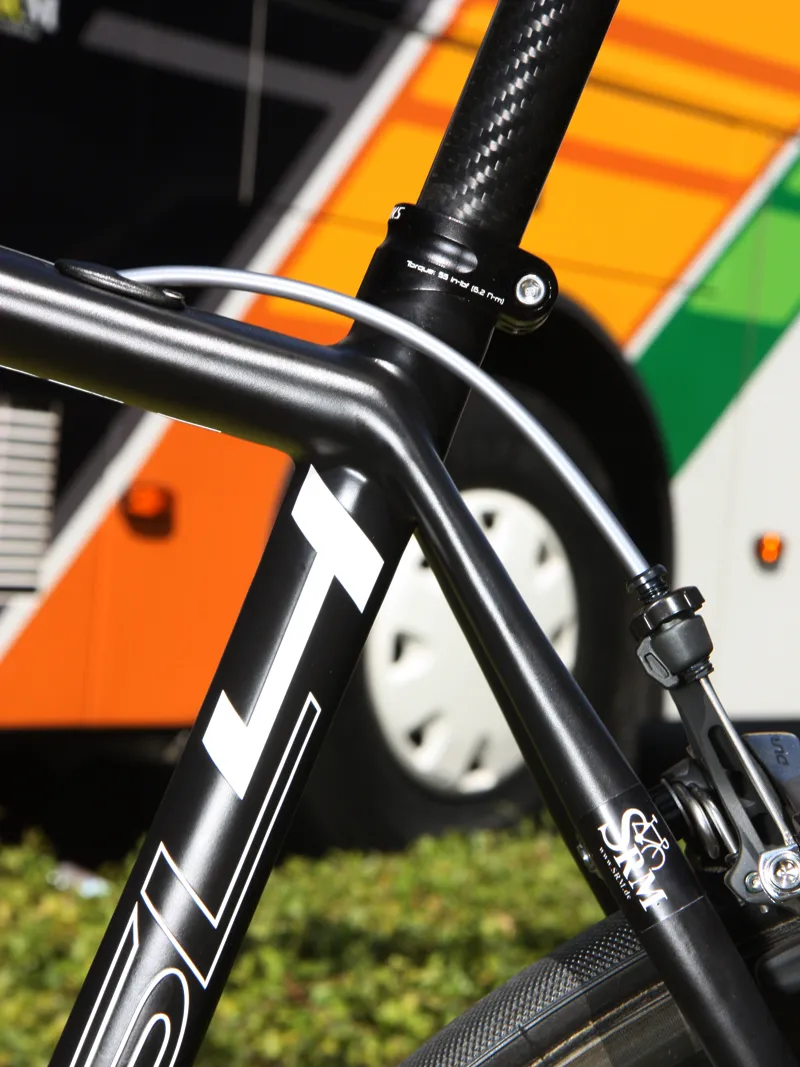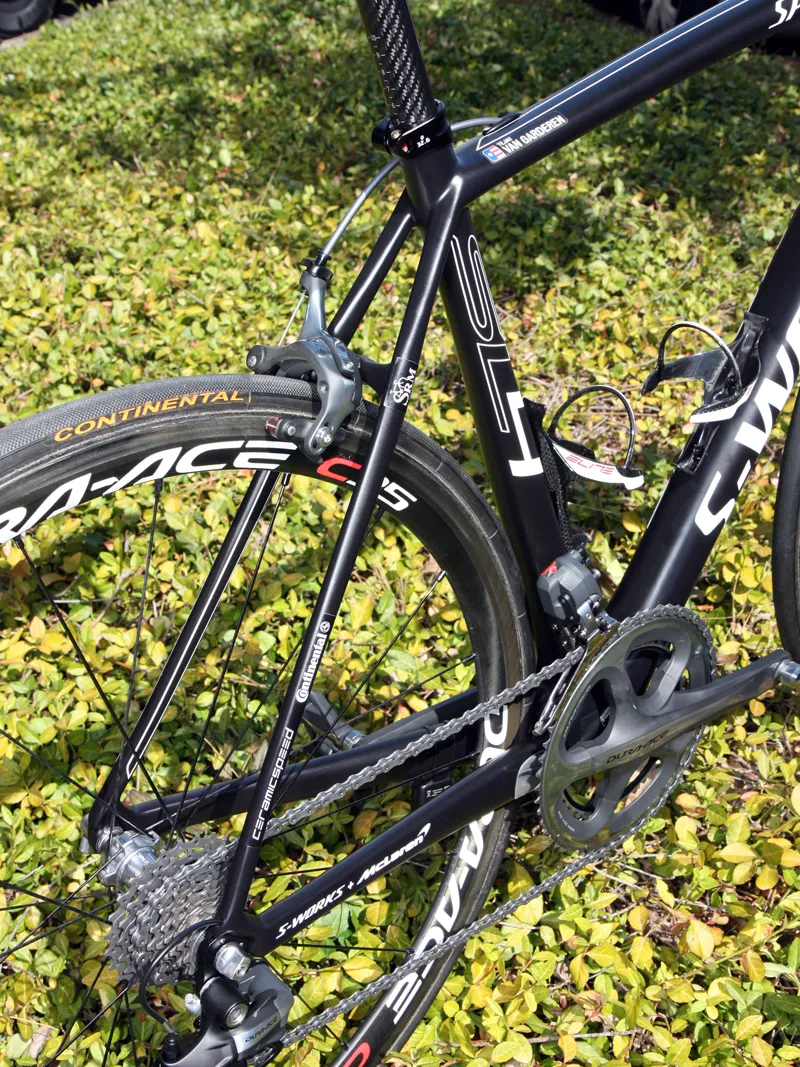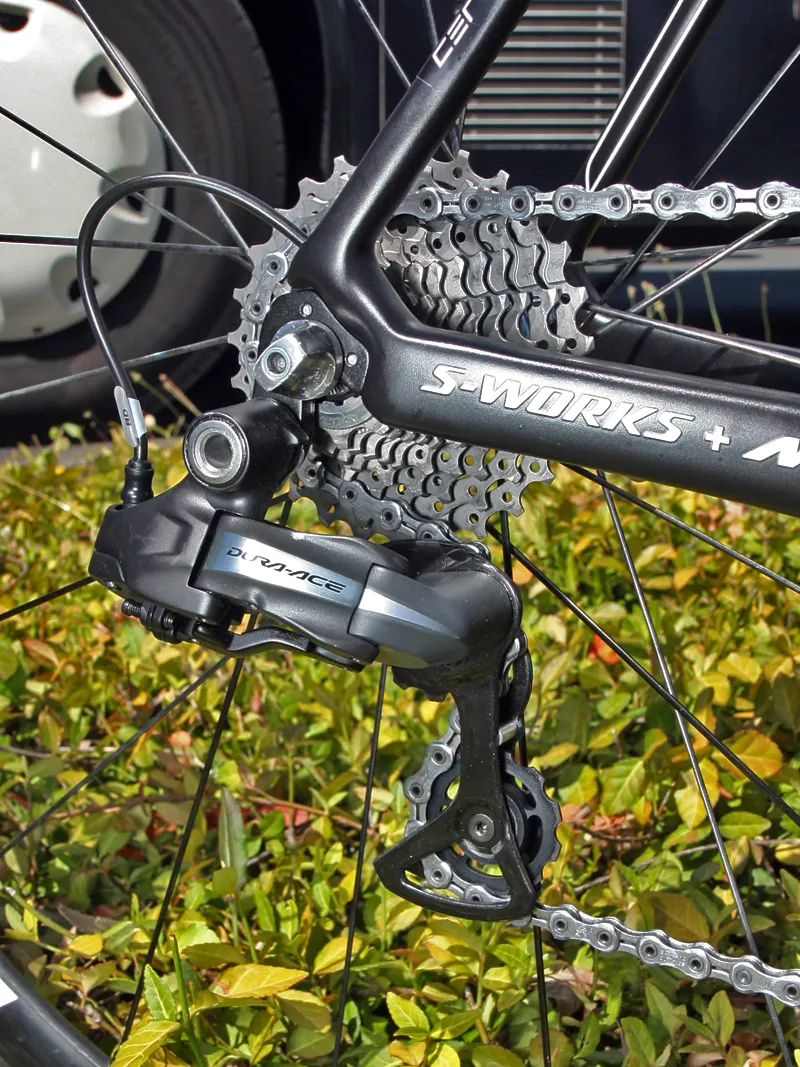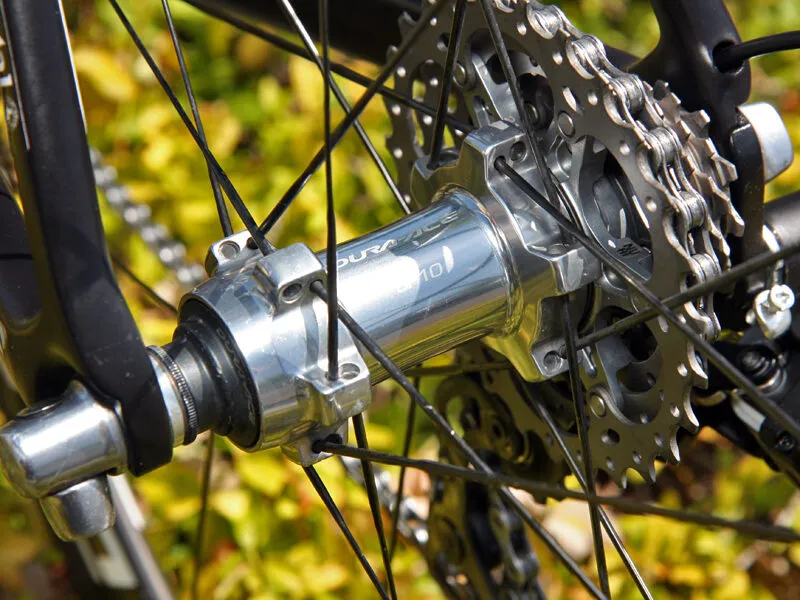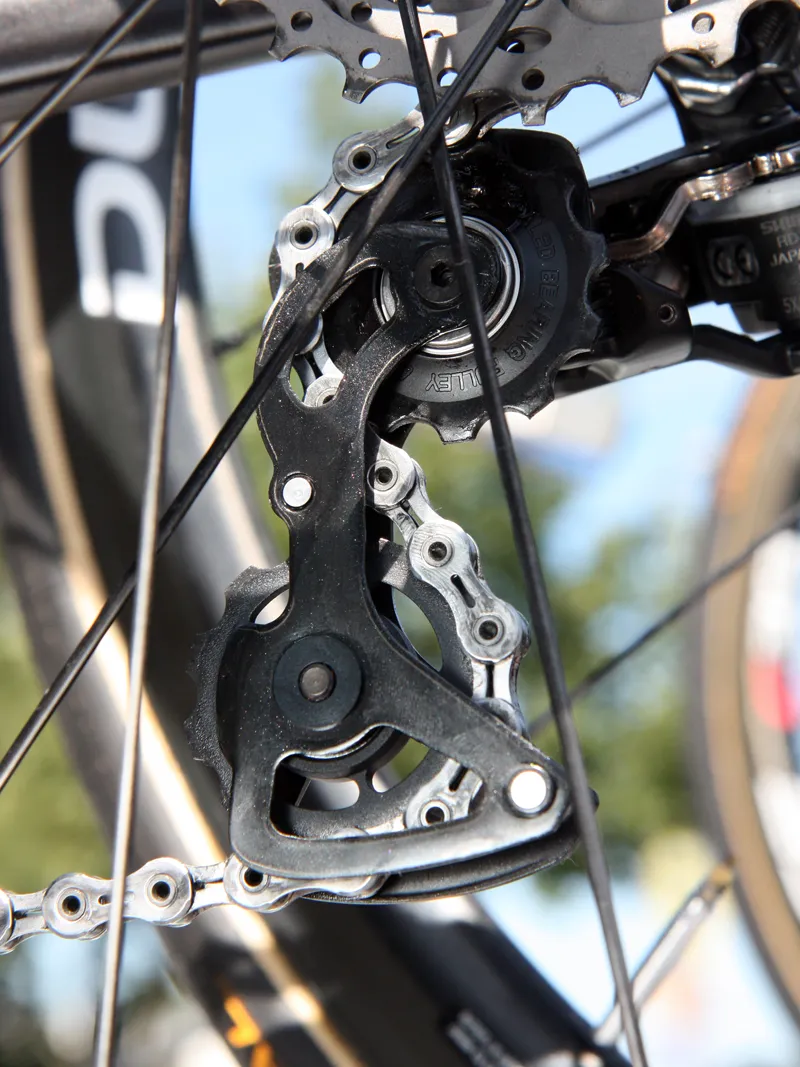Specialized are on a bit of a tear this year, scoring several key wins on new bikes right after they've been introduced to the public. The latest chapter in the company's new-bike saga is the S-Works Tarmac SL4, and one of the HTC-Highroad riders with the potential to do something big this time around is young American hotshot Tejay Van Garderen.
The Tarmac SL4 continues with the light-and-stiff theme of its SL3 predecessor but with the usual tweaks expected of a newer version. The lower steerer tube diameter has been slimmed down to 1-3/8in to save weight while the down tube and top tube have grown in width to boost torsional stiffness; the seatstays boast a flattened upper section for a more comfortable ride; chainstays have been puffed up to bolster pedaling efficiency; and the rear dropouts have been upgraded to hollow carbon fiber.
In total, Specialized claim a 19 percent boost in stiffness and a 50g weight saving relative to the SL3. Van Garderen's bike isn't an off-the-shelf SL4, though. Technically speaking, it's a "Specialized Project Black S-Works McLaren" development bike, according to company PR man Nic Sims – in other words, a test mule built in conjunction with partners McLaren for a possible higher-end version of the standard SL4.
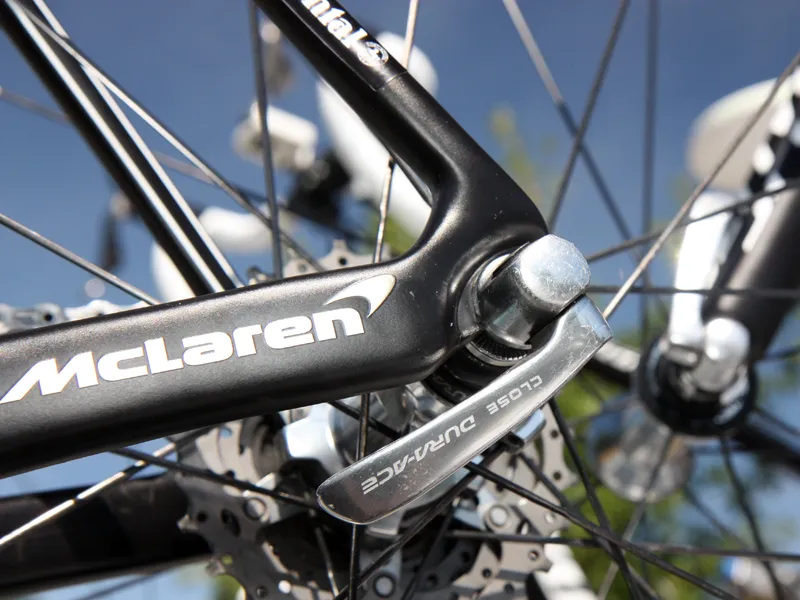
The new Specialized S-Works Tarmac SL4 is built with hollow carbon fiber dropouts
Sims wasn't allowed to tell us what differences exist between a standard SL4 and Van Garderen's bike, but based on the companies' previous collaboration on the Venge model, weight and stiffness are obvious targets for improvement. Sims did tell us, however, that Specialized will make a final decision on whether or not to bring an "S-Works McLaren Tarmac SL4" to market based on what sort of performance gains can be had and how much they would cost. Team test riders such as Van Garderen will be providing feedback to Specialized during the Tour and then we'll know after things wrap up in Paris.
One obvious change, however, is the routing. Production bikes use convertible internal routing that will work with either mechanical or electronic systems but Van Garderen's machine is Di2-only – the entry ports on the down tube are shaved clean and the result is an impressively tidy appearance (a welcome departure from early season Di2-equipped team bikes, that were occasionally a little clumsy in comparison).
The main wiring harness now enters the top tube just ahead of the brake housing, there's a port on the front of the seat tube for the front derailleur line, and the rear derailleur wire runs all the way through the driveside chainstay. Oh, but where's the battery? It isn't visible through the unused bottom bracket cable guide port, there's no mounting bracket hardware on the exterior surface of the frame, and it doesn't rattle around when the bike is shaken. There's also no obvious method by which it's charged.
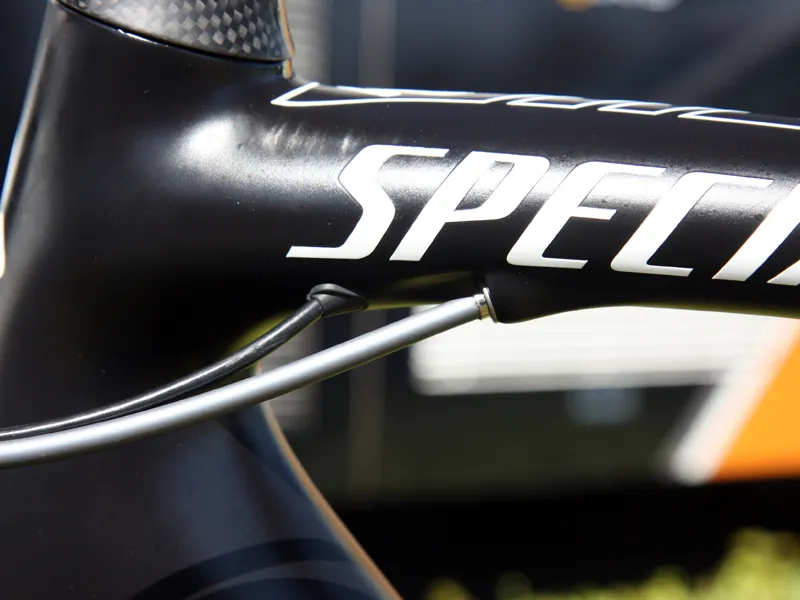
The Di2-specific routing on Tejay Van Garderen's (HTC-Highroad) Specialized McLaren Tarmac SL4 is particularly clean
HTC TechDev manager Lars Teutenberg would only say on the record that the battery is safely tucked away inside the frame. He was much more forthcoming off the record, but we're restricted to saying that the system is remarkably clever – to the point where once word gets out, other Di2 users will undoubtedly have a "why didn't I think of that?" moment.
Shimano round out most of the rest of Van Garderen's build, including the 35mm-deep carbon tubular wheels, carbon-bodied SPD-SL pedals and previous-generation PRO stem and anatomic-bend bar. Tires are from Continental, Fi'zi:k provide their top-end Aliante saddle with Twin Flex carbon shell and braided carbon rails, and Elite supply their latest Sior carbon fiber and titanium bottle cages.
That Aliante saddle is mounted atop an unmarked 3T Doric seatpost instead of the team-issue PRO one, however, as PRO as yet still don't produce one with Van Garderen's requisite zero-offset head. Final touches are filled in with SRM power meters and computer heads (though Van Garderen's bike went with a standard crank just prior to the start of the Tour), a custom etched K-Edge chain catcher from AceCo, and CeramicSpeed bearings and lower derailleur pulleys. Total weight as pictured is 6.84kg (15.08lb).
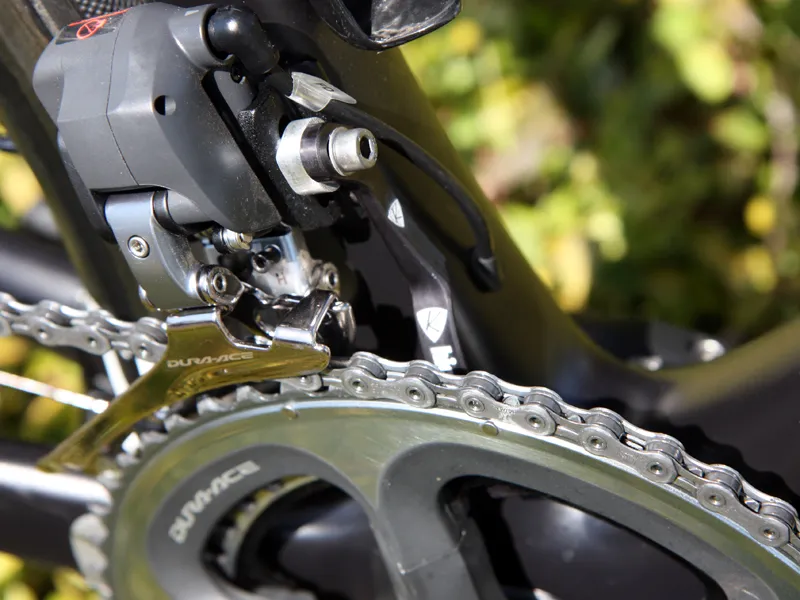
AceCo K-Edge chain watchers are a popular item in this year's Tour de France
Bike specifications
- Frame: Specialized McLaren Tarmac SL4, 56cm
- Fork: Specialized McLaren Tarmac SL4
- Headset: Cane Creek integrated, 1-1/8 to 1-3/8in
- Stem: PRO Vibe, 140mm x -6°
- Handlebar: PRO Vibe Anatomic, 42cm (c-c)
- Tape: PRO cork
- Front brake: Shimano Dura-Ace BR-7900 w/ carbon-specific pads:
- Rear brake: Shimano Dura-Ace BR-7900 w/ carbon-specific pads:
- Brake levers: Shimano Dura-Ace Di2 STI Dual Control ST-7970:
- Front derailleur: Shimano Dura-Ace Di2 FD-7970:
- Rear derailleur: Shimano Dura-Ace Di2 RD-7970
- Shift levers: Shimano Dura-Ace Di2 STI Dual Control ST-7970
- Cassette: Shimano Dura-Ace CS-7900, 12-27T
- Chain: Shimano Dura-Ace CN-7900
- Crankset: Shimano Dura-Ace FC-7900, 175mm, 53/39T
- Bottom bracket: CeramicSpeed
- Pedals: Shimano Dura-Ace SPD-SL PD-7900
- Wheelset: Shimano Dura-Ace WH-7900-C35-TU
- Front tire: Continental Competition Pro Limited Allround tubular, 22mm
- Rear tire: Continental Competition Pro Limited Allround tubular, 22mm
- Saddle: Fi'zi:k Aliante Carbon Twin Flex
- Seatpost: 3T Doric (unmarked)
- Bottle cages: Elite Sior (2)
- Computer: SRM Power Control 7
- Other accessories: Custom internal battery configuration
Critical measurements
- Rider's height: 1.85m (6ft 1in)
- Rider's weight: 67kg (148lb)
- Saddle height, from BB (c-t): 817mm
- Saddle setback: 75mm
- Seat tube length, c-t: 548mm
- Seat tube length, c-c: 499mm
- Tip of saddle nose to C of bars (next to stem): 604mm
- Saddle-to-bar drop (vertical): 135mm
- Head tube length: 160mm
- Top tube length: 565mm
- Total bicycle weight: 6.84kg (15.08lb)

